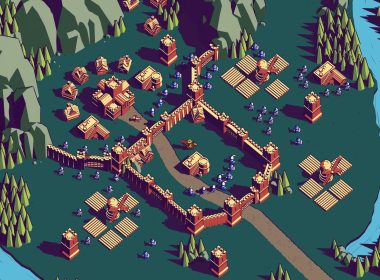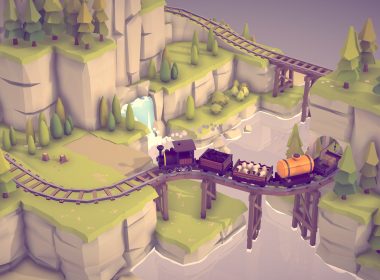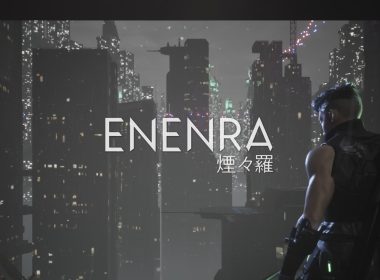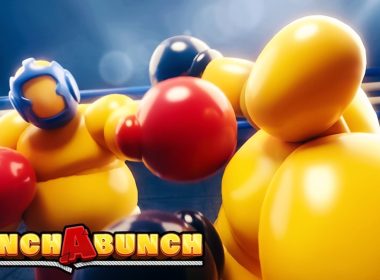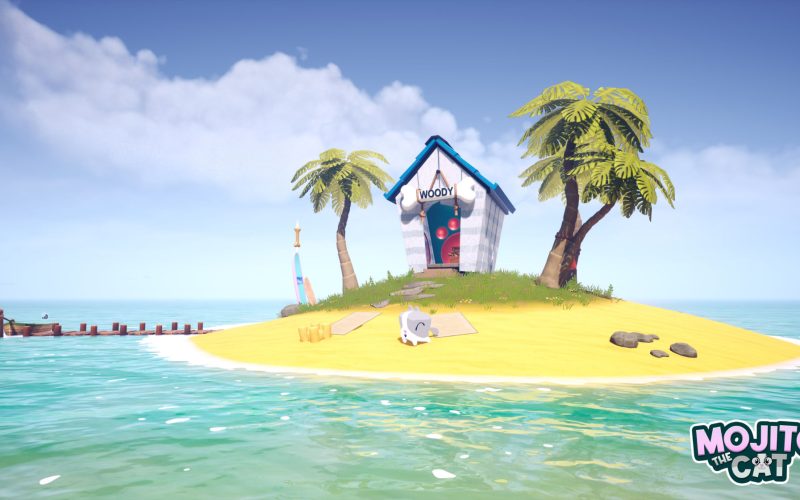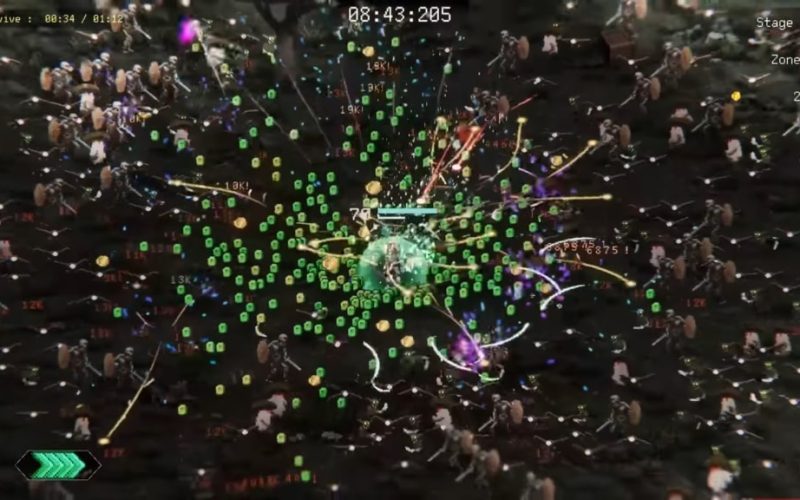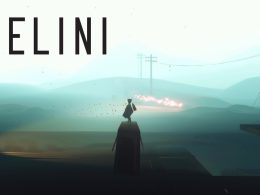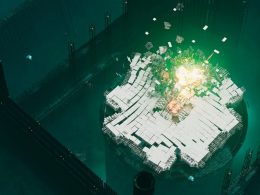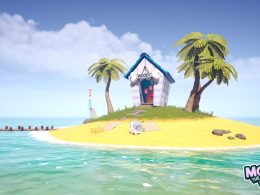While browsing through different subreddits, I came across a stunning illustration of a low poly castle surrounded by a colorful forest, where NPCs walked by the roads of the city. I thought, “Damn, I’d love to play a game like that.” I was thrilled to find out that the illustration was from a game in development!
I contacted Elivard, the developer of Earth of Oryn, to ask him some questions.
How did you jump into the game development world and why your started this project?
To answer this question I will have to go back to when I started learning programming. I have always loved to build things from scratch but when I was 14 I didn’t have any budget so It was sometimes hard to work on my projects.
Then I discovered the internet world and the possibilities that come with it. It was possible to build nice things with no budget if I worked hard so I dive into it making tiny websites, and joining programming communities,… I was also playing one of those browser games where you have to come back every day to do some small tasks. I liked the project and decided to build mine from scratch learning new concepts as things progress.

Warnation was born and despite having an awful code and a lot of bugs it was a success with more than 20k players on it. I learned a lot from it. Not only programming but infrastructure, marketing, art, and community management. It also gave me the possibility to buy my own laptop and rent servers. It was a very exciting time! I continued working on it and some other similar projects until I was 17 then I stopped, thinking I would not like to spend all my life in front of a computer but some years later I figured out that it was really my passion. I started working as a software agency working on iOS, Android and some backend parts. Then I joined a startup leading a team of 5-6 people and then another startup working on an IOT device. But I was not that happy as the industry always wants you to specialize as much as possible and what I like is to dig into a lot of subjects, working on a game solo allows it!
? Earth of Oryn is LIVE on #Kickstarter ?
— Earth of Oryn ✨ KICKSTARTER LIVE NOW ✨ (@EarthOfOryn) November 16, 2022
? An indie city-builder/strategy game in a medieval world filled with story and heart.
✨Get your game -> https://t.co/G9pIuZg6NK #indiegame #indiedev #gamedev #Steam #indiewatch pic.twitter.com/nc9qsWNyJl
The idea of a new game was continuously popping up in my head, hence, after saving enough money, I decided to give myself one chance and started to work on a city builder as it’s the genre I like the most. I took 6 months working on the concept and then started developing it.
You are running a campaign on Kickstarter right?
Yes I’m making a Kickstarter because I feel like it’s the most suitable way for a solo developer like myself to make a project with the scope and scale I’m planning for Earth of Oryn.

It’s also the best way for me to keep the game as indie as possible while being able to keep the same art and gameplay direction I feel is most suitable for the game.
This has been my life for the better part of two years now, and it truly is a dream come true for me. I want nothing more than to be able to make Earth of Oryn, and (assuming people are interested in it) support the game for years to come with both free updates and DLC drops.
? Support “Earth of Oryn” on Kickstarter
Describe in a few words the Earth of Oryn
It’s mainly a fantasy city builder where you have to build castles and kingdoms and manage your citizens. It’s set in a unique world with a story, a lore, and many different biomes and civilizations which will influence the gameplay because of their different traits. The goal is to have a very complex world where you can micro-optimize everything or macro-automate processes as you prefer.

Is there any particular “twist” or any aspect that makes this game unique?
The deepness of what you can do. Every new game is a new adventure where your choices and the biome around you will lead you to complete different paths and ways to play. Focusing on the economy (liberal, capitalist, communist, other?), the defense (structure and/or military?), the culture (beliefs, habits,…), the laws, the taxes, and the technology will lead you to different results and you will not be able to play on all levels at the same time.
Did you get inspired by other titles? Tell us which one and why.
Yes! Roller coaster tycoon is one of my biggest inspirations. I like the fact that when you complete your mission you still want to continue playing the level to make everything perfect, setting your own new goals.
But I also got inspiration from Banished, Stronghold, AOE, Timberborn and Rimworld to name a few of them.

Tell us more about your pipeline, which tools are you using to develop your game?
I’m using Unity as a game engine as I think it was the best fit for a city builder game plus it has a huge community which is important to find help when stuck or plug-and-play resources when you need some. For the 3D I use Blender mostly because it’s free and I already used this software for a while but I’m considering migrating to Maya as it is more widely used with Unity and will help optimize my work pipeline. For the texture I’m mainly using Photoshop and Adobe premiere Pro to edit the video I make.

From the trailer we can spot very nice castles and towns! It seems that the city-builder tool is exceptionally accurate and lets players create whatever they want! Could you tell us something about it?
There is a big focus and making the right set of tools to customize your kingdom.
– Building roads and aqueducts with a variety of materials and auto-generating the supports, side walls or decorations, and roofs. The tool uses a material definition that contains multiple lists of prefabs variants that could be used for generation. The variants are important so it makes the final building more organic, limiting repetition.

– Procedurally generated buildings creating blueprints for construction and building evolution. So I can let a citizen decide “I want a 10m2 house with an x budget and I’m a lumberjack” and the tool generates it. Technically I started with a 3D array and flagging some 3D coordinates following some rules that are tweakable. Then I have the space and I can iterate on it to add the prefabs that are coming from a different definition following the set of objects that should be available for the used biome and the available resources and technologies.

– And finally, the “by hand” tool lets you place single objects one by one with some snapping mechanics when needed. E.G. a water mill wheel or a water gate will auto snap at the right place on an aqueduct to help the player.
There is something magical about the colors and the look&feel of Earth of Oryn. Would you mind sharing some info about how you achieved this great result?
Everything is in low poly and the key may be to work hard on the texture and shaders. Low poly objects with good texture can look way better than a complex one with basic texture.
I also try to avoid repetition for the more organic texture mixing layer of the same texture with noise masks. Creating my own shaders with Unity Shader Graph (which is quite powerful and intuitive) so they all behave the same way. For example, I can have a pool of textures and change the same parameter for all to change the level of snow or dust at run time.
I also work on a light that changes its color and intensity following the daytime and has a big impact on the visuals. A small piece of advice would be to set a dark blue light during the night scene instead of just reducing the white light intensity to improve visibility and ambiance.

Adding ambient occlusion might also be something you want to do as it adds a lot of deepness to the visual and makes details more visible.
Biomes wise I’m procedurally generating them based on multiple layers of perlin noises. It helps get some more natural results very fast. I add some parameters and some randomness factors to optimize the result I want. This way I can also expand the map based on the perlin noise seeds as I just need to read the next pixels of the generated image or generate a new one changing the x or y axis. I also detect what’s in the existing environment so I can place specific prefabs on the borders of the rivers for example.
I’m not using it for the terrain at the moment but it’s on my roadmap and will make things look even more natural.

Also, I’m using the HDRP rendering pipeline.
If you have any question about the game or its development feel free to join ? me on Discord. I will be glad to have a chat with you!
Cheer!
Elivard
